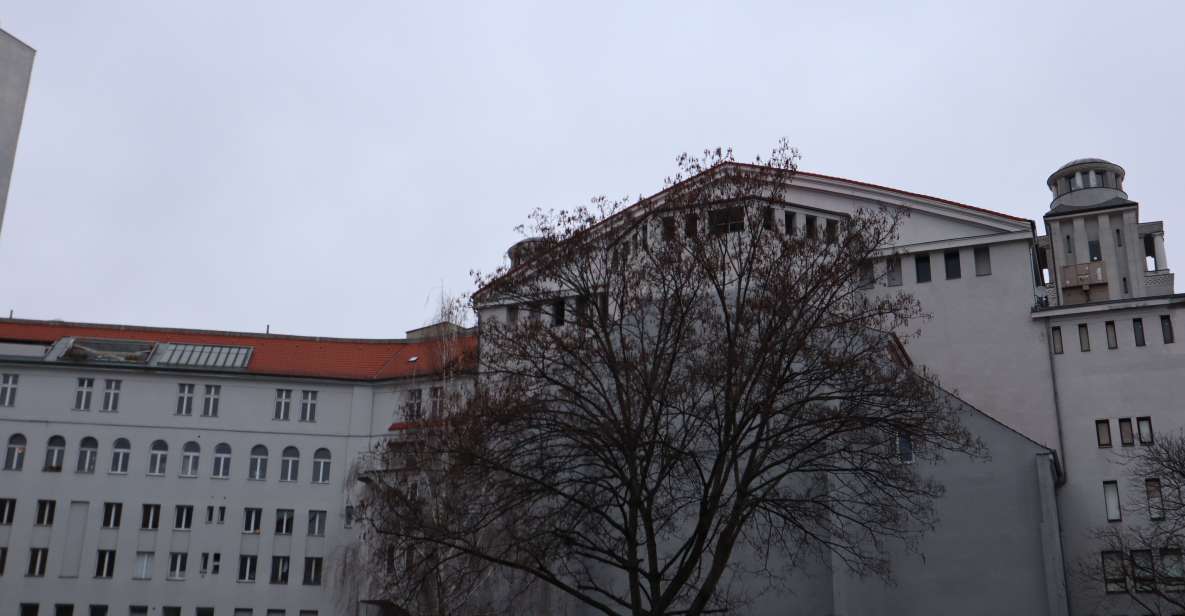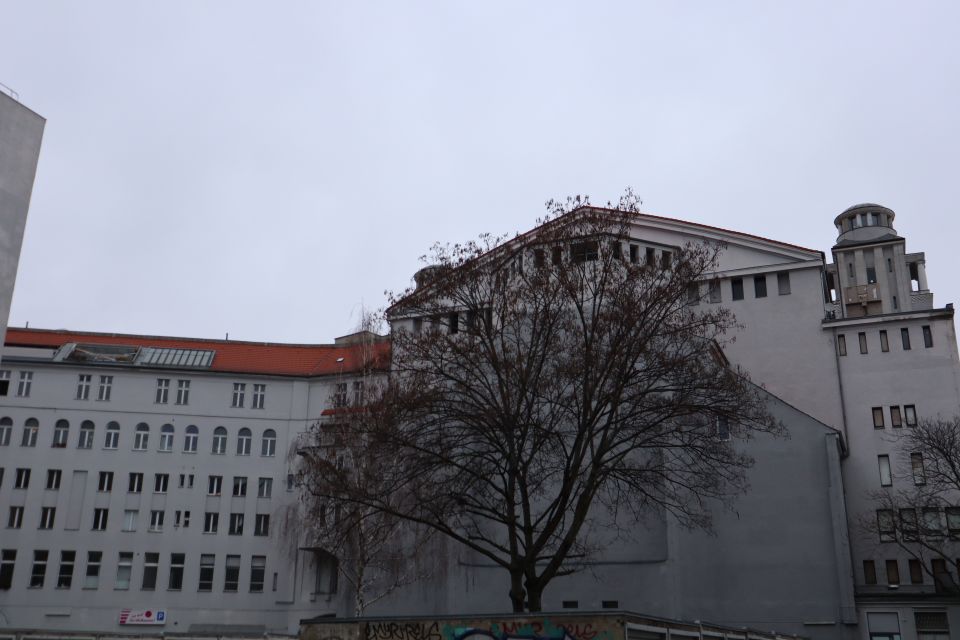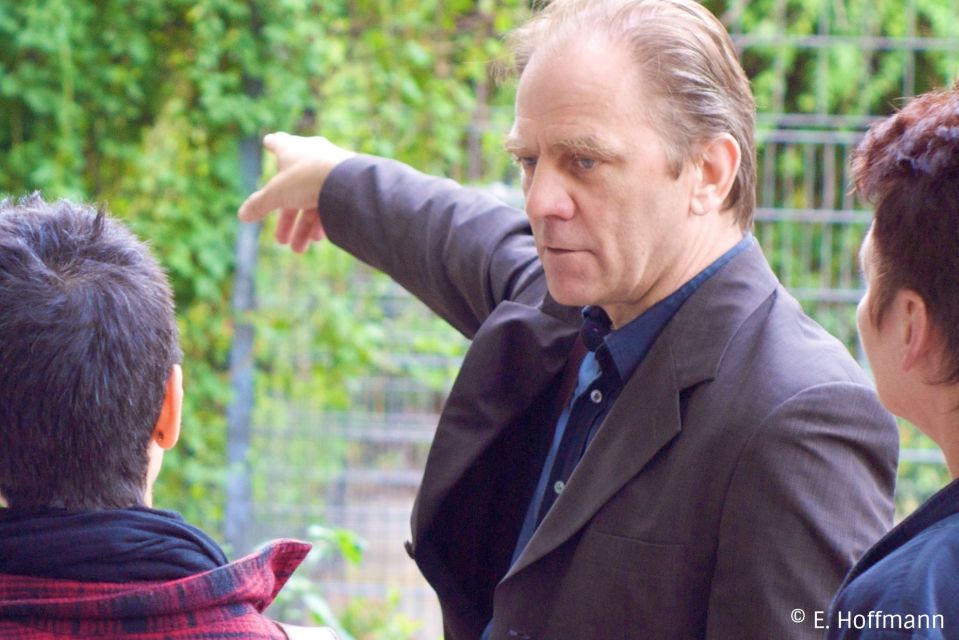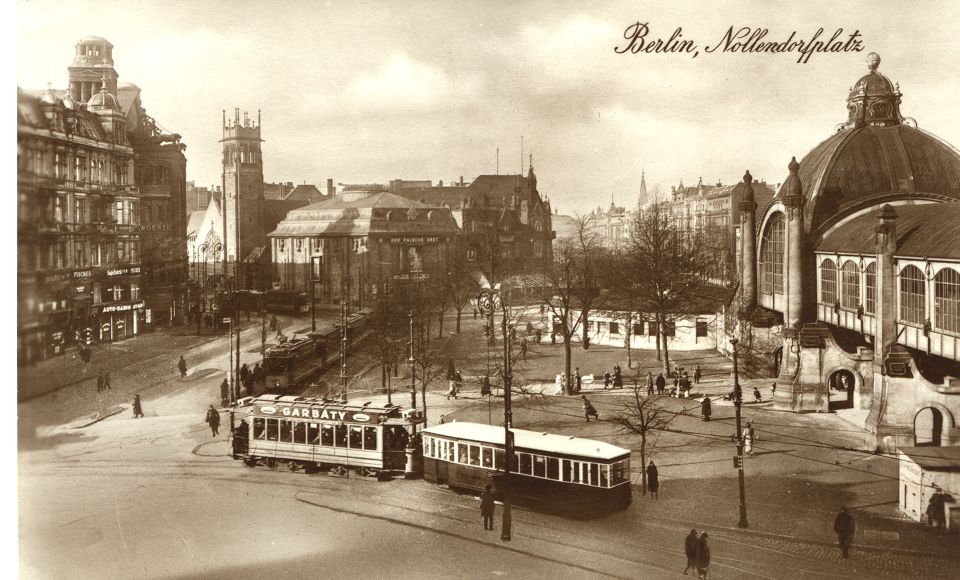In "Art: Berlin – Literary Schöneberg – Forays From 1900 to 1945," participants uncover the rich literary legacy of a neighborhood that served as a creative haven for groundbreaking artists and writers. This guided tour brings to life 18 pivotal sites, from the iconic Piscator Stage to the lively Nollendorf Casino, all while evoking the bohemian essence of the Roaring ’20s. E. Hoffmann’s storytelling weaves together the revolutionary spirit and cultural impact of the era, prompting one to wonder how these historical threads still resonate in today’s artistic landscape. What stories lie beneath the surface of this vibrant past?
Key Points

- Literary Schöneberg was a vibrant hub for writers and artists between 1900 and 1945, fostering creativity and cultural exchange.
- The "Roaring 20s" saw avant-garde movements challenge societal norms, influencing literature, music, and art.
- Key authors like Alfred Kerr and Hans Fallada explored societal critiques and everyday life within their works.
- Notable locations such as the former Piscator Stage and Nollendorf Casino played vital roles in the bohemian culture of the time.
- Guided tours today highlight this literary legacy, featuring readings and visits to significant historical sites.
It's also worth checking out some other tours and experiences nearby.
Overview of Literary Schöneberg

Literary Schöneberg, a vibrant neighborhood in Berlin, holds a rich tapestry of cultural history that flourished between 1900 and 1945.
This area became a hub for influential writers and artists, who breathed life into its streets and cafes during the early to mid-20th century. The bohemian spirit of the "Roaring 20s" resonated here, as creatives gathered in significant meeting spots, exchanging ideas that shaped modern literature.
Key sites like the former Piscator Stage and Nollendorf Casino witnessed groundbreaking performances and literary discussions.
Today, echoes of their works, from prose to poetry, invite exploration and reflection. Schöneberg’s literary past continues to inspire, making it a must-visit destination for those eager to connect with its storied heritage.
Historical Significance of the Area

Schöneberg’s historical significance unfolds through its rich legacy of artistic innovation and social change.
During the early 20th century, this vibrant district became a hub for avant-garde movements, attracting influential writers and artists. The period between 1900 and 1945 marked a transformation, as bohemian lifestyles flourished amidst political upheaval.
Schöneberg witnessed the rise of the "Roaring 20s," characterized by a dynamic cultural scene that challenged societal norms. This area served as a backdrop for literary gatherings, where groundbreaking ideas emerged, reflecting the era’s spirit of experimentation.
Plus, remnants of the Nazi regime remind visitors of the struggles faced by the artistic community.
Schöneberg’s legacy endures, reminding us of its crucial role in shaping modern literature and culture.
Key Authors and Their Works

Amidst the vibrant cultural tapestry of early 20th-century Schöneberg, a number of key authors emerged, each leaving an indelible mark on the literary landscape.
Their works not only reflected the tumultuous times but also shaped the future of German literature.
Notable figures include:
-
Alfred Kerr: Known for his sharp critiques of society.
-
Ernst Weiß: A novelist whose works often explored existential themes.
-
Hans Fallada: Celebrated for his poignant depictions of everyday life.
-
Paul Scheerbart: An innovative writer whose ideas on utopia influenced modern thought.
-
Ernst Toller: A playwright whose works captured the spirit of revolution.
These authors contributed to a rich narrative that defined Schöneberg’s literary heritage.
Highlights of the Tour
This guided tour offers a fascinating glimpse into the literary history of Schöneberg, showcasing 18 significant locations that shaped the cultural scene from 1900 to 1945.
Participants will explore sites connected to the bohemian spirit of the "Roaring 20s," including the former Piscator Stage and Nollendorf Casino.
Each stop reveals the residences and workspaces of notable authors like Alfred Kerr and Paul Scheerbart, immersing visitors in the vibrant literary atmosphere.
The tour also features readings of prose and poetry, bringing the words of Hans Fallada and Ernst Toller to life at their respective locations.
Engaging with these historical landmarks, attendees gain insight into Schöneberg’s rich literary legacy and its lasting influence on culture and society.
Cultural Impact of the 1920s
In the vibrant landscape of the 1920s, a remarkable cultural transformation unfolded, marked by artistic experimentation and social upheaval.
This era saw a flourishing of creativity that influenced literature, music, and visual arts, as Berlin emerged as a hub for avant-garde movements.
The cultural impact of the decade can be summarized through notable elements:
- The rise of Expressionism in art and literature.
- Jazz music becoming a defining soundtrack of the nightlife.
- The emergence of cabaret as a bold form of entertainment.
- A surge in feminist literature and discussions on gender.
- Increased political engagement and critique through the arts.
These elements collectively shaped a unique cultural identity that resonated throughout Berlin and beyond, leaving a lasting legacy on the city’s artistic landscape.
Notable Locations Visited
Numerous notable locations await exploration on the art:berlin – Literary Schönberg tour, each steeped in rich history and literary significance.
Participants will visit the former Piscator Stage, a pivotal venue for revolutionary theater, and the iconic Nollendorf Casino, where bohemian culture thrived.
The Beautiful Unknown, a café frequented by writers and artists, stands as a testament to the vibrant literary scene of the 1920s.
Each site offers a glimpse into the lives and works of influential authors like Alfred Kerr, Hans Fallada, and Ernst Toller.
With prose and poetry echoing through these historic streets, visitors can enjoy the cultural tapestry that shaped Berlin’s artistic legacy during a tumultuous period.
Booking and Reservation Details
For those eager to embark on the art:berlin – Literary Schönberg tour, securing a spot is straightforward and flexible.
Booking is as simple as visiting the tour website and following a few steps. Tourists appreciate the ease of making arrangements, which include:
- Free cancellation up to 24 hours in advance for a full refund
- Options to reserve now and pay later, ensuring peace of mind
- Selecting preferred participants and dates during the booking process
- Checking availability based on starting times
- Enjoying a guided experience led by actor E. Hoffmann
With a starting price of $20.13 per person, this tour offers an enriching journey into literary history while catering to diverse travel plans.
Customer Experiences and Reviews
Experiencing the art:berlin – Literary Schöneberg tour has left many travelers captivated by the rich literary history of the area.
Participants rave about the engaging storytelling of actor E. Hoffmann, who guides them through 18 historical locations. From couples to solo adventurers, visitors appreciate the well-planned itinerary that highlights significant sites like the former Piscator Stage and Nollendorf Casino.
Reviewers consistently mention the immersive experience, where literary works come alive through on-site presentations. With an impressive overall rating of 5/5, travelers commend the flexible booking options, making it easy to reserve.
Many express gratitude for the chance to explore Schöneberg’s vibrant past, affirming that this tour is a must for anyone interested in Berlin’s literary heritage.
Here's a few more nearby tours and experiences we think you'll like.
Frequently Asked Questions
Is the Tour Suitable for Non-German Speakers?
The tour’s conducted in German, so non-German speakers might struggle with understanding. However, they could still enjoy the sights. It’s advisable for them to bring a translator or join a multilingual tour for better comprehension.
What Should I Wear for the Tour?
For the tour, she’d recommend comfortable walking shoes and layers. The weather can change, so a light jacket or sweater works well. Sun protection like a hat or sunglasses is also a smart choice.
Are There Any Age Restrictions for Participants?
The tour doesn’t impose age restrictions, welcoming participants of all ages. Families, couples, and solo travelers enjoy the experience together. It’s an opportunity for everyone to engage with literary history and culture.
Is Photography Allowed During the Tour?
During the tour, participants can take photos, capturing memories of historical locations. While E. Hoffmann encourages photography, he suggests being respectful of the sites and other guests to maintain an enjoyable experience for everyone.
Can I Bring My Pet Along on the Tour?
He checked the tour details, discovering that pets aren’t allowed for safety and comfort reasons. Visitors should plan accordingly and consider alternative arrangements for their furry companions while enjoying the guided experience.
Not for you? Here's more of our most recent tour reviews happening neaby
- Berlin: Guided Walking Tour of the Old Town
- Berlin: Walking Tour on Protest and Resistance in Berlin
- Berlin: Salon Culture Guided Walking Tour
- Berlin: Tour of Karl-Marx-Allee, the Socialist Boulevard
- Berlin: Tour Through Moabits Criminal History
- Berlin: Walking Tour Through the Hansaviertel
- Art:Berlin – Grunewald Villa Colony
- Explore Berlin Tour: History and Highlights
- Berlin: Manufacture Guided Tour & Tasting
- Berlin: Urban Exploration With Daily Bike Rentals
- Berlin-Marwitz: Factory Tour of Hedwig Bollhagen Ceramics
- Berlin: Alternative Walking Tour Mitte & Kreuzberg
- Berlin: Friedenau Neighborhood Historic Walking Tour
- Berlin: City Center Walking Tour
- Berlin: Charité Hospital History Walking Tour
Recap
To sum it up, "Art: Berlin – Literary Schöneberg – Forays From 1900 to 1945" offers a captivating journey through a vibrant literary past. Participants discover the rich tapestry of influential authors and iconic locations that shaped the cultural landscape of the early 20th century. With engaging storytelling and a lively exploration of the area’s bohemian spirit, this tour promises an unforgettable experience for anyone interested in the revolutionary ideas and artistic fervor that defined the Roaring 20s.
